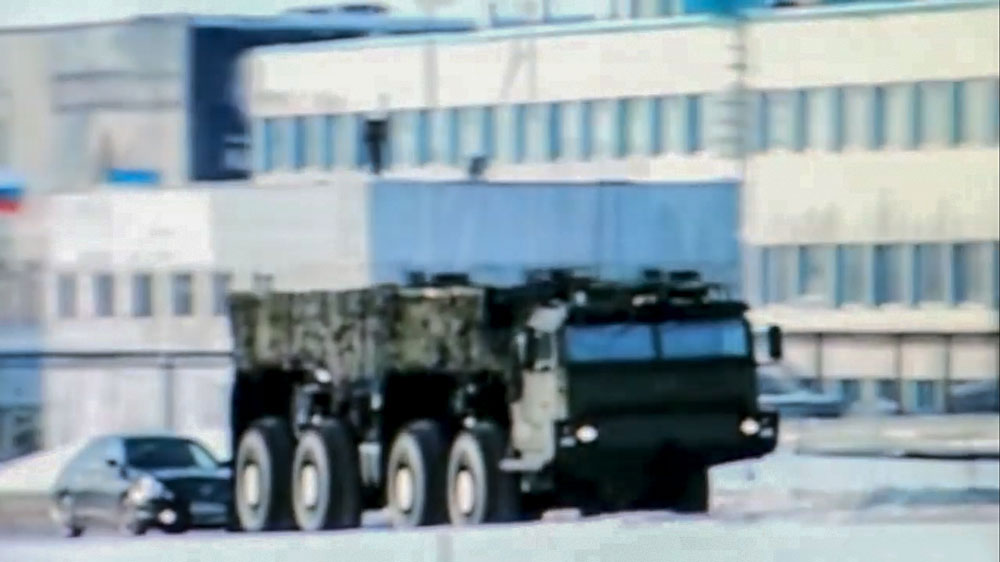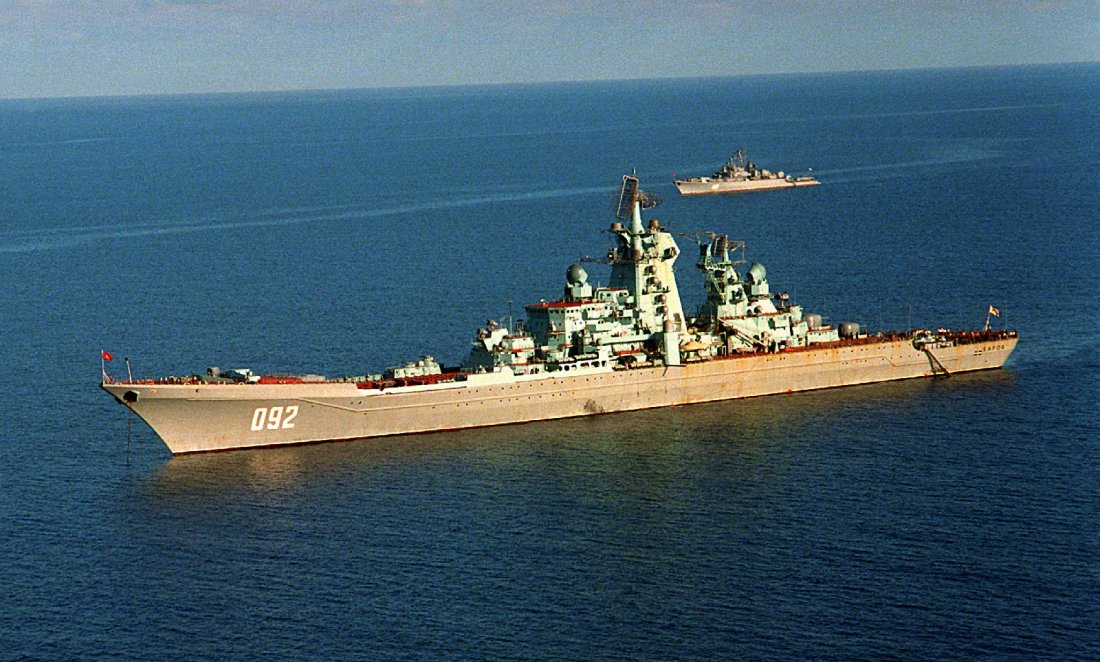The Russian Navy Is Dismantling Two Massive Nuclear Battlecruisers. Here's Why.
April 22, 2019
The recycling of the battlecruisers Admiral Ushakov and Admiral Lazarev will leave in service at most two vessels in the class, accelerating the fleet’s evolution into a leaner but more modern force.
by
David Axe
The Russian navy reportedly has decided
to dismantle two laid-up
Kirov-class nuclear battlecruisers.
The recycling of the battlecruisers
Admiral Ushakov and
Admiral Lazarev will leave in service at most two vessels in the class, accelerating the fleet’s evolution into a leaner but more modern force.
Battlecruiser
Petr Velikiy is the flagship of the Northern Fleet.
Admiral Nakhimov awaits repairs at the Sevmash shipyard in Severodvinsk, a port city on Russia's White Sea.
826 feet long and displacing 24,000 tons, the 1980s-vintage
Kirovs by far are the largest surface combatants in the world. The Soviet navy planned to deploy them against American carrier battle groups and supply convoys.
The big, missile-armed ships are expensive to maintain. Soon after the collapse of the Soviet Union, the Russian navy laid up
Admiral Ushakov,
Admiral Lazarev and
Admiral Nakhimov. As recently as 2014, the fleet planned to repair and return to service all three of the vessels.
But that has proved too costly for the cash-strapped Russian navy. The
Izvestiya newspaper reported that
Admiral Ushakov and
Admiral Lazarev will be recycled.
Admiral Nakhimov, too, is in trouble,
according to Russian Defense Policy:
In mid-2013, the [Ministry of Defense] gave Sevmash a contract for Nakhimov’s repair and modernization. It was supposed to return to the fleet in 2018. But work on the ship didn’t commence until October 2014. About this time it was expected to rejoin the navy by 2020.
Last year, Sevmash was saying not later than 2021. Early this year, it said 2021 to 2022. In August, [United Shipbuilding Corporation head Alexei] Rakhmanov said customer changes to the plan for Nakhimov’s modernization will take longer to complete.
Now at fully four years into its reconstruction, Admiral Nakhimov has a ways to go. In 2017, spaces were cleared for new missile (Kalibr, Tsirkon) and air defense (Poliment-Redut) systems. But no installation work had begun. Integrating these weapons into new ... systems won’t be easy …
The repair and modernization of Petr Velikiy will obviously be put off until Nakhimov is done.
There are rumors the Russian navy soon also will decommission its only aircraft carrier
Admiral Kuznetsov, which in October 2018 suffered serious damage at the 82nd Repair Shipyard in Roslyakovo, a northern port city, when the PD-50 dry-dock sank while
Kuznetsov was aboard for repairs.
According to
Izvestia, the Kremlin might just decommission Kuznetsov rather than spend the money to acquire a new dry-dock, move an existing dock or the carrier or find some other way of repairing the aging, unreliable and accident-prone flattop.
“Not everyone considers the continuation of repair to be appropriate,” a navy source reportedly
told Izvestia. “There are different opinions, including those that boil down to the fact that with this money it is better to build a pair of frigates or a nuclear submarine.”
Even before PD-50's sinking, the Russian fleet was slowly replacing big, old ships with much smaller new ones that can't sail as far or carry as much weaponry, but which are cheaper and easier to operate and repair than the old vessels are.
The Kremlin bought four new, small warships in 2018. The Russian fleet numbers some 300 vessels, most of them displacing just a few thousand tons. For comparison, the U.S. Navy has roughly the same number of ships, but they are, on average, much larger.
Moscow had planned on extending the service lives of its carrier and other warships from the 1980s in order to complement the newer vessels. For long-range deployments across the Atlantic or to war zones such as Syria, Russia tended to send
Kuznetsov and equally aged, Soviet-built destroyer and cruisers.
Now the Kremlin might no longer have that option. But that doesn’t mean Russia can’t deploy naval power. The Russian fleet’s newer corvettes, which are a fraction of the size of a Cold War cruiser, lack range and must remain close to home.
But long-range missiles and land-based air cover can obviate the need for a ship to travel across the sea with an aircraft carrier for protection. In recent years, corvettes from the Caspian Sea fleet have fired long-range Kalibr cruise missiles at targets in Syria -- all without ever leaving Russian waters or the cover provided by land-based fighter planes.
The Russian navy reportedly has decided to dismantle two laid-up Kirov-class nuclear battlecruisers. The recycling of the battlecruisers Admiral Ushakov and Admiral Lazarev will leave in service at most two vessels in the class, accelerating the fleet’s evolution into a leaner but more modern...

nationalinterest.org




